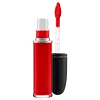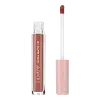What's inside
What's inside
 Key Ingredients
Key Ingredients

 Benefits
Benefits

 Concerns
Concerns

 Ingredients Side-by-side
Ingredients Side-by-side

Isododecane
EmollientDimethicone
EmollientTrimethylsiloxysilicate
EmollientPolybutene
Petrolatum
EmollientCyclohexasiloxane
EmollientKaolin
AbrasiveDisteardimonium Hectorite
StabilisingSilica Dimethyl Silylate
EmollientTocopherol
AntioxidantPersea Gratissima Oil
Skin ConditioningCyclopentasiloxane
EmollientGlyceryl Behenate/Eicosadioate
EmollientTin Oxide
AbrasivePropylene Carbonate
SolventCaprylyl Glycol
EmollientHexylene Glycol
EmulsifyingAroma
Phenoxyethanol
PreservativeMica
Cosmetic ColorantCI 77891
Cosmetic ColorantCI 77491
Cosmetic ColorantCI 77492
Cosmetic ColorantCI 77499
Cosmetic ColorantCI 42090
Cosmetic ColorantCI 75470
Cosmetic ColorantCI 15850
Cosmetic ColorantCI 45410
Cosmetic ColorantCI 73360
Cosmetic ColorantCI 45380
Cosmetic ColorantCI 17200
Cosmetic ColorantCI 19140
Cosmetic ColorantCI 15985
Cosmetic ColorantIsododecane, Dimethicone, Trimethylsiloxysilicate, Polybutene, Petrolatum, Cyclohexasiloxane, Kaolin, Disteardimonium Hectorite, Silica Dimethyl Silylate, Tocopherol, Persea Gratissima Oil, Cyclopentasiloxane, Glyceryl Behenate/Eicosadioate, Tin Oxide, Propylene Carbonate, Caprylyl Glycol, Hexylene Glycol, Aroma, Phenoxyethanol, Mica, CI 77891, CI 77491, CI 77492, CI 77499, CI 42090, CI 75470, CI 15850, CI 45410, CI 73360, CI 45380, CI 17200, CI 19140, CI 15985
Isododecane
EmollientAlumina
AbrasiveDiisostearyl Malate
EmollientTrimethylsiloxysilicate
EmollientDiisopropyl Dimer Dilinoleate
EmollientIsohexadecane
EmollientHydrated Silica
AbrasiveDisteardimonium Hectorite
StabilisingOctyldodecanol
EmollientCitrus Aurantium Dulcis Peel Extract
Emulsion StabilisingCitrus Grandis Peel Extract
AstringentCitrus Junos Peel Extract
Skin ConditioningCitrus Clementina Fruit Extract
Skin ConditioningCucumis Melo Cantalupensis Fruit Extract
AstringentHedychium Spicatum Extract
Skin ConditioningCitrus Tangerina Peel Extract
AstringentLavandula Angustifolia Flower/Leaf/Stem Extract
MaskingVanilla Planifolia Fruit Extract
Skin ConditioningZingiber Officinale Root Extract
MaskingTocopherol
AntioxidantPropylene Carbonate
SolventEthylene/Propylene/Styrene Copolymer
Diethylhexyl Syringylidenemalonate
Skin ProtectingDibutyl Lauroyl Glutamide
Skin ConditioningDibutyl Ethylhexanoyl Glutamide
Skin ConditioningAroma
Hydrogenated Polydicyclopentadiene
Caprylic/Capric Triglyceride
MaskingPhenoxyethanol
PreservativeTerminalia Ferdinandiana Seed Oil
AntioxidantPrunus Avium Seed Oil
EmollientRhus Verniciflua Peel Wax
Caprylyl Glycol
EmollientButylene/Ethylene/Styrene Copolymer
Ethylhexylglycerin
Skin ConditioningHexylene Glycol
EmulsifyingPentaerythrityl Tetra-Di-T-Butyl Hydroxyhydrocinnamate
AntioxidantC10-18 Triglycerides
EmollientTriethoxycaprylylsilane
Silica
AbrasiveAluminum Hydroxide
EmollientIsopropyl Titanium Triisostearate
EmollientBis-PEG-15 Dimethicone/Ipdi Copolymer
PEG-2 Soyamine
EmulsifyingCI 77266
Cosmetic ColorantCI 77163
Cosmetic ColorantCI 42090
Cosmetic ColorantCI 77400
Cosmetic ColorantIron Oxides
CI 77742
Cosmetic ColorantMica
Cosmetic ColorantCI 15850
Cosmetic ColorantCI 45380
Cosmetic ColorantCI 45410
Cosmetic ColorantCI 73360
Cosmetic ColorantCI 16035
Cosmetic ColorantCI 77891
Cosmetic ColorantCI 19140
Cosmetic ColorantIsododecane, Alumina, Diisostearyl Malate, Trimethylsiloxysilicate, Diisopropyl Dimer Dilinoleate, Isohexadecane, Hydrated Silica, Disteardimonium Hectorite, Octyldodecanol, Citrus Aurantium Dulcis Peel Extract, Citrus Grandis Peel Extract, Citrus Junos Peel Extract, Citrus Clementina Fruit Extract, Cucumis Melo Cantalupensis Fruit Extract, Hedychium Spicatum Extract, Citrus Tangerina Peel Extract, Lavandula Angustifolia Flower/Leaf/Stem Extract, Vanilla Planifolia Fruit Extract, Zingiber Officinale Root Extract, Tocopherol, Propylene Carbonate, Ethylene/Propylene/Styrene Copolymer, Diethylhexyl Syringylidenemalonate, Dibutyl Lauroyl Glutamide, Dibutyl Ethylhexanoyl Glutamide, Aroma, Hydrogenated Polydicyclopentadiene, Caprylic/Capric Triglyceride, Phenoxyethanol, Terminalia Ferdinandiana Seed Oil, Prunus Avium Seed Oil, Rhus Verniciflua Peel Wax, Caprylyl Glycol, Butylene/Ethylene/Styrene Copolymer, Ethylhexylglycerin, Hexylene Glycol, Pentaerythrityl Tetra-Di-T-Butyl Hydroxyhydrocinnamate, C10-18 Triglycerides, Triethoxycaprylylsilane, Silica, Aluminum Hydroxide, Isopropyl Titanium Triisostearate, Bis-PEG-15 Dimethicone/Ipdi Copolymer, PEG-2 Soyamine, CI 77266, CI 77163, CI 42090, CI 77400, Iron Oxides, CI 77742, Mica, CI 15850, CI 45380, CI 45410, CI 73360, CI 16035, CI 77891, CI 19140
 Reviews
Reviews

Ingredients Explained
These ingredients are found in both products.
Ingredients higher up in an ingredient list are typically present in a larger amount.
Aroma refers to an ingredient, or mixture of ingredients, that impart or mask a flavor.
The name is slightly confusing. This is because INCI associates aroma with flavor instead of smell.
Here is the official definition from the The International Cosmetic Ingredient Dictionary and Handbook:
“Aroma is a term for ingredient labeling used to identify that a product contains a material or combination of materials normally added to a cosmetic to produce or to mask a particular flavor.”
INCI shows the only purpose of aroma to be "flavouring".
However, due to regulation differences, some companies may use aroma in place of parfum.
In Canada, this ingredient only has to be listed in concentrations above 1%.
Learn more about AromaCaprylyl Glycol is a humectant and emollient, meaning it attracts and preserves moisture.
It is a common ingredient in many products, especially those designed to hydrate skin. The primary benefits are retaining moisture, skin softening, and promoting a healthy skin barrier.
Though Caprylyl Glycol is an alcohol derived from fatty acids, it is not the kind that can dry out skin.
This ingredient is also used as a preservative to extend the life of products. It has slight antimicrobial properties.
Learn more about Caprylyl GlycolCi 15850 is the pigment color red. It is an azo dye and created synthetically.
Azo dyes need to be thoroughly purified before use. This allows them to be more stable and longer-lasting.
This ingredient is common in foundations, lipsticks, and blushes. This color is described as brown/orangey red.
It has many secondary names such as Red 6 and Red 7. According to a manufacturer, Red 6 usually contains aluminum.
Learn more about CI 15850CI 19140 is also known as Tartrazine. Tartrazine is a synthetic dye used in cosmetics, foods, and medicine to add a yellow color.
Tartrazine is created from petroleum and is water-soluble.
Some people may experience allergies from this dye, especially asthmatics and those with an aspirin intolerance.
Learn more about CI 19140Ci 42090 is a synthetic dye created from petroleum. It is used to give a bright blue color to cosmetics, medicine, and food.
Ci 45380 is a synthetic dye that comes from coal or tar sources. Due to this, it is often used in small quantities.
A common name for this dye is Red 22. Red 22 imparts a warm reddish color.
Similar to Red 27, this dye changes color based on pH and moisture levels.
This dye is colorless when dry but turns pink between pH levels 0.0 to ~3.0.
Learn more about CI 45380CI 45410 is a synthetic red-pigment and dye.
It often goes by both Red 28 or Red 27; manufacturers label both ingredients as CI 45410.
This dye is commonly found in makeup because it imparts a vivid color. Some types of this dye change color based on pH level and interaction with moisture:
Your skin has a natural pH of around 4.5 - 5.5.
According to the FDA, CI 45410 is not permitted for use in eye products.
Red 27 is a flourescein dye and commonly used as a fluorescent tracer in medicine.
Learn more about CI 45410Ci 73360 is a synthetic red-pink dye.
Ci 77891 is a white pigment from Titanium dioxide. It is naturally found in minerals such as rutile and ilmenite.
It's main function is to add a white color to cosmetics. It can also be mixed with other colors to create different shades.
Ci 77891 is commonly found in sunscreens due to its ability to block UV rays.
Learn more about CI 77891Disteardimonium Hectorite comes from the clay mineral named hectorite. It is used to add thickness to a product.
It can also help stabilize a product by helping to disperse other ingredients.
Hectorite is a rare, white clay mineral.
Learn more about Disteardimonium HectoriteHexylene Glycol is a surfactant. Glycols are a class of alcohols. Hexylene Glycol is a surfactant and emulsifier.
As a surfactant, Hexylene Glycol helps gather dirt and oil on your skin to be washed away.
As an emulsifier, Hexylene Glycol helps keep water and oil together. This prevents them from separating in a product. Hexylene Glycol also thins out the texture of a product by lessening viscosity.
Hexylene Glycol has a small molecular weight.
Learn more about Hexylene GlycolIsododecane is a fragrance, emollient, and solvent.
As an emollient, it helps your skin stay soft and hydrated. Emollients help trap moisture into your skin.
Isododecane's role as a solvent makes it a great texture enhancer. It spreads smoothly on skin and does not leave a sticky feeling behind. Isododecane also helps prevent color transfer in makeup products.
Isododecane is not absorbed into skin.
Learn more about IsododecaneMica is a naturally occurring mineral used to add shimmer and color in cosmetics. It can also help improve the texture of a product or give it an opaque, white/silver color.
Serecite is the name for very fine but ragged grains of mica.
This ingredient is often coated with metal oxides like titanium dioxide. Trace amounts of heavy metals may be found in mica, but these metals are not harmful in our personal products.
Mica has been used since prehistoric times throughout the world. Ancient Egyptian, Indian, Greek, Roman, Aztec, and Chinese civilizations have used mica.
Learn more about MicaPhenoxyethanol is a preservative that has germicide, antimicrobial, and aromatic properties. Studies show that phenoxyethanol can prevent microbial growth. By itself, it has a scent that is similar to that of a rose.
It's often used in formulations along with Caprylyl Glycol to preserve the shelf life of products.
This ingredient is a solvent. It helps dissolve active ingredients and alter the texture of products.
Propylene Carbonate is commonly used in makeup and with clay, such as montmorillonite or bentonite.
Studies show this ingredient to be safe for cosmetics. When it is undiluted, it can cause skin irritation. (It is always diluted in skincare and makeup). This ingredient is water-soluble.
Propylene Carbonate is created from propylene glycol and carbonic acid.
Learn more about Propylene CarbonateTocopherol (also known as Vitamin E) is a common antioxidant used to help protect the skin from free-radicals and strengthen the skin barrier. It's also fat soluble - this means our skin is great at absorbing it.
Vitamin E also helps keep your natural skin lipids healthy. Your lipid skin barrier naturally consists of lipids, ceramides, and fatty acids. Vitamin E offers extra protection for your skin’s lipid barrier, keeping your skin healthy and nourished.
Another benefit is a bit of UV protection. Vitamin E helps reduce the damage caused by UVB rays. (It should not replace your sunscreen). Combining it with Vitamin C can decrease sunburned cells and hyperpigmentation after UV exposure.
You might have noticed Vitamin E + C often paired together. This is because it is great at stabilizing Vitamin C. Using the two together helps increase the effectiveness of both ingredients.
There are often claims that Vitamin E can reduce/prevent scarring, but these claims haven't been confirmed by scientific research.
Learn more about TocopherolThis silicone is an emollient. Emollients create a thin film on the skin to prevent moisture from escaping.
It is not soluble in water and helps increase water-resistance in products.
According to a manufacturer, it can blend seamlessly with silicone oils, such as Cyclopentasiloxane.
Learn more about Trimethylsiloxysilicate